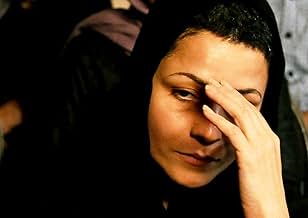This debut art-house, admiringly explores the contemporary Tehran and its underground art scene focusing on a life of a young actress who has been banned from her theater work. Struggling to pursue her passion in art as well as her secret life-style in a socially repressed environment, Marzieh gets involved in some subsequent and unexpected events leading her to a point where she eventually finds herself at a decision-making dilemma regarding her survival and identity. Distancing her work from already-acclaimed Iranian exotic cinema which is mostly known by Kiarostami's masterful minimalistic portrayal of rural life, nature landscapes, deprived yet passionate children as well as Majidi's colorful and transcendental cinema of the people struggling for survival in the outskirts of Tehran, the writer/director Granaz Moussavi still applies the poetic language of Iranian cinema but in depicting the double-sided life style of the urban middle class people and their every day life's uncertainties. My Tehran for Sale has a cunning multi-layered yet non-judgmental approach in addressing a number of issues like underground life of young people, women oppression, HIV issue, secret abortions, underground art as well as immigration and crisis of identity, people smuggling and also asylum seeker detention centers all in a subtle way. Made gorilla-style with several shaky hand-held camera shots, the film reflects the chaotic nature of living experience in today's Tehran. My Tehran For Sale seems to be pushing the boundaries in terms of form and narrative as well as the theme in Iranian contemporary cinema. Some prohibited songs and musics are employed through out the film presenting a number of emerging alternative singers such as Namjoo -Iran's Bob Dylan-according to New york Times. Finally, My Tehran for Sale seems to consciously dissolves the borders of documentary and fiction in many scenes using a non-linear narrative with an open ending. These elements could perhaps remind the Iranian cinema lovers of an alloy of Shahid-Sales' uneventful documentary style filmmaking,Kiarostami's half-made style and also Farhadi's socio-existentialist interactive recent films. This alternative movie has dared to go far beyond the norms of Iranian mainstream cinema and sneaked into the blurred reality of the lives of many forced underground or exiled which has never portrayed before in Iranian cinema making it a quite daring and subversive work.























